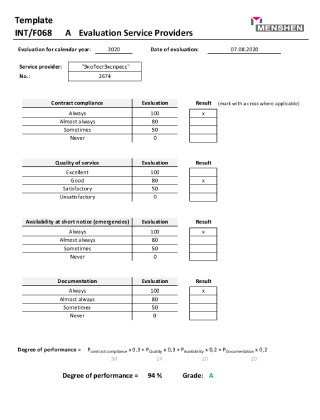-
Ultimate Guide to Plinko in Canada — Tips, Strategies, and Fun Facts
-
Understanding the Basics of Plinko Gameplay
-
Components of a Typical Board
-
Understanding Scoring Mechanics in Plinko
-
Mastering the Game: Techniques for Success
-
Analyzing Bounce Patterns for Improved Outcomes
Ultimate Guide to Plinko in Canada — Tips, Strategies, and Fun Facts
Immerse yourself in the captivating world of this popular amusement activity, where strategy meets chance in a colorful display of excitement. Mastering the plinko gambling art of gameplay requires not only a keen understanding of mechanics but also a selection of effective approaches that can enhance your experience.
Engage your senses as you explore various configurations that traditional setups may not offer. Pay attention to the angle of release and the positioning of pegs, which can significantly influence outcomes. For the most rewarding experience, consider practicing with variations that challenge your skills and adaptability.
Knowing when to employ a more aggressive style versus a conservative play can elevate your chances of success. Additionally, familiarize yourself with the specific variants available in different venues to capitalize on unique opportunities.
Delve into community discussions and forums where enthusiasts share their insights, anecdotal experiences, and winning methods. Understanding prevailing trends can also give you an edge, allowing you to modify your approach based on collective wisdom.
Prepare for your adventure by discovering essential gear and choosing locations that offer competitive edges. By leveraging comprehensive knowledge and building a strategic framework, you’ll be ready to truly enjoy this engaging pastime with heightened insight and excitement.
Understanding the Basics of Plinko Gameplay
To fully enjoy the excitement of this classic game, it is essential to grasp its fundamental mechanics. Players typically begin by releasing a disk from a designated point at the top of the board, allowing gravity to guide its descent. The board is lined with pegs that create a chaotic path, ensuring that each fall is unpredictable.
The layout usually features multiple slots at the bottom, each designated with different point values. These values can vary widely, so players should familiarize themselves with the scoring system prior to participation. The objective is to aim for the highest point slots while navigating through the maze of pegs.
When dropping the disk, you can adjust your launch angle to influence the final landing position. Experimenting with different angles can yield insights into prevailing patterns, which may improve your outcomes over time. Observing the behavior of the disks during previous rounds can also provide valuable clues.
In addition, understanding the role of randomization in the gameplay is crucial. Each playthrough is unique due to the arrangement of pegs and the physical properties of the disk. This element of chance adds to the thrill but also means that consistency in results is not guaranteed.
Players should be mindful of their pacing as well. Spacing out their turns allows for better focus and consideration of each drop, which can lead to more strategic decisions. Additionally, keeping track of previous scores could help in assessing what strategies worked best in prior attempts.
Ultimately, engaging with this entertaining game involves both skill and luck. Mastering the balancing act between these elements can enhance your experience and potentially lead to higher scores. Embrace the chaotic nature of the game and enjoy the ride as your disk travels through its unpredictable course.
Components of a Typical Board
The core structure of a standard board is composed of several distinct elements that work together to create an engaging experience. Understanding these components is crucial for maximizing enjoyment and gameplay effectiveness.
1. Pegs: These are small, often metallic, projections that form a crucial part of the board. Arranged in a staggered pattern, they deflect the balls as they descend, adding an element of randomness. The placement and density of pegs can significantly influence the path a ball takes, making strategic positioning essential.
2. Channels: Located at the bottom of the board, channels or slots catch the balls as they reach the end of their journey. Each channel corresponds to various prize tiers or scoring systems, allowing players to aim for specific outcomes. The width and depth of these channels determine the ball’s final resting place and potential score.
3. Release Mechanism: The upper section of the board features a device for launching the balls into the playing field. This can take the form of a lever or hopper. A precise and consistent release can enhance accuracy and control, leading to better gameplay outcomes.
4. Ball: Typically crafted from durable materials, the balls are designed to roll smoothly down the pegs and land in the channels. The size and weight of the balls can alter their trajectory, adding variability to each game session. Choosing the right type can affect the overall gameplay experience.
5. Prize Indicators: Often integrated into the board or located nearby, these indicators showcase the potential rewards associated with each channel. Clearly marked and easily visible, they allow players to make informed decisions about where to aim, enhancing strategic play.
6. Base: The foundation of the setup is critical for stability and balance. A sturdy base prevents tipping or wobbling during gameplay, ensuring a smooth and uninterrupted experience. Choosing a solid construction material is essential for durability and longevity.
Recognizing the importance of each component aids players in adapting their gameplay. Mastering the interplay between these elements can elevate not just performance but overall enjoyment of the game.
Understanding Scoring Mechanics in Plinko
In this game, scoring relies on a combination of dropped discs navigating through a maze of pegs. Each peg serves as a potential deflector, redirecting the path of the disc towards designated slots at the bottom. These slots typically vary in point values, creating a dynamic scoring environment.
The distribution of the scoring slots often follows a pattern, where center positions yield higher rewards while outer slots offer lesser points. A keen awareness of this layout enables players to adjust their dropping technique. For maximum efficiency, aim for consistent angles, which influences how often discs can land in the more lucrative spots.
Player experience plays a crucial role in scoring optimization. Observational practice allows individuals to learn the trajectory patterns influenced by the pegs, helping to predict where their discs are likely to land. This knowledge can lead to informed decision-making on disc release points, effectively increasing the chances of hitting high-scoring areas.
Furthermore, some variations of the game introduce multipliers or bonus segments that enhance scoring potential. Being aware of these special features can significantly influence gameplay tactics. Commitment to varied dropping techniques ensures adaptability to different scoring frameworks presented by these variations.
To summarize, understanding the nuances of scoring functions in this disc-dropping game involves grasping the impact of trajectory and slot configurations. By honing observational skills and mastering release techniques, players can navigate this intricate scoring system with greater success.
Mastering the Game: Techniques for Success
Enhancing your performance in this entertaining game involves understanding key methods that can lead to greater success. Here are some effective approaches to elevate your gameplay:
- Familiarize with the Layout: Spend time observing the board design and the distribution of pegs. Knowing where the most lucrative slots are located can greatly influence your dropping decision.
- Experiment with Drop Zones: Alter your dropping points. Different areas may yield varied outcomes; test multiple zones to discover patterns or trends.
- Set a Budget: Establish a financial limit before starting. This will help you maintain control and prevent impulsive decisions that could lead to significant losses.
- Analyze Previous Rounds: Review the results of earlier plays. Record outcomes to identify which areas have performed well and which have not. This analysis may offer valuable insights over time.
- Utilize Timing: Timing your drops can play a role in optimizing results. Pay attention to the rhythm of the game, as consistent timing may enhance your chances of hitting favorable slots.
- Practice Makes Perfect: Engage in sessions without monetary stakes to hone your skills. The more you play, the better your understanding of how the game operates will become.
- Engage with the Community: Join forums or social media groups. Sharing experiences and discussing techniques with others can provide new perspectives and ideas to enhance your gameplay.
By implementing these specific recommendations, you can refine your abilities and increase your enjoyment of this engaging activity. Every play is a new chance, so make the most of your experience!
Analyzing Bounce Patterns for Improved Outcomes
Understanding the behavior of bouncing discs can significantly enhance your playing experience. By identifying specific bounce trends, players can refine their techniques to maximize success rates. Observation is key; players should track the trajectory and angles at which their discs strike the pegs.
To translate observations into actionable insights, consider documenting bounce outcomes in a systematic manner. This record-keeping can reveal patterns that may not be immediately obvious during gameplay. Pay attention to peg placement, as certain positions in the board can lead to predictable outcomes.
| Left Edge | Rarely scores high | 10% |
| Center | Often leads to jackpot zones | 45% |
| Right Edge | Unpredictable; lower success | 15% |
| Left Midpoint | Moderate success rate | 30% |
Experiment with your launch angles. Adjusting the starting angle can create significant variance in how the disc interacts with the pegs. Testing various launch techniques will help in understanding which angles yield more favorable outcomes over time.
Regularly analyze your data to spot trends. For instance, if launching from a specific angle consistently leads to better scores, incorporate that technique more often. Studying bounce patterns provides players a tactical advantage that can be applied repeatedly in various settings.
In addition to personal observations, consider engaging with other players to exchange insights. Community discussions can lead to the discovery of novel techniques and a deeper understanding of gameplay dynamics.
Ultimately, enhancing your outcomes hinges on a combination of observation, documentation, and adjustment. By analyzing and refining your approach based on empirical data, your gameplay can transform considerably.



















